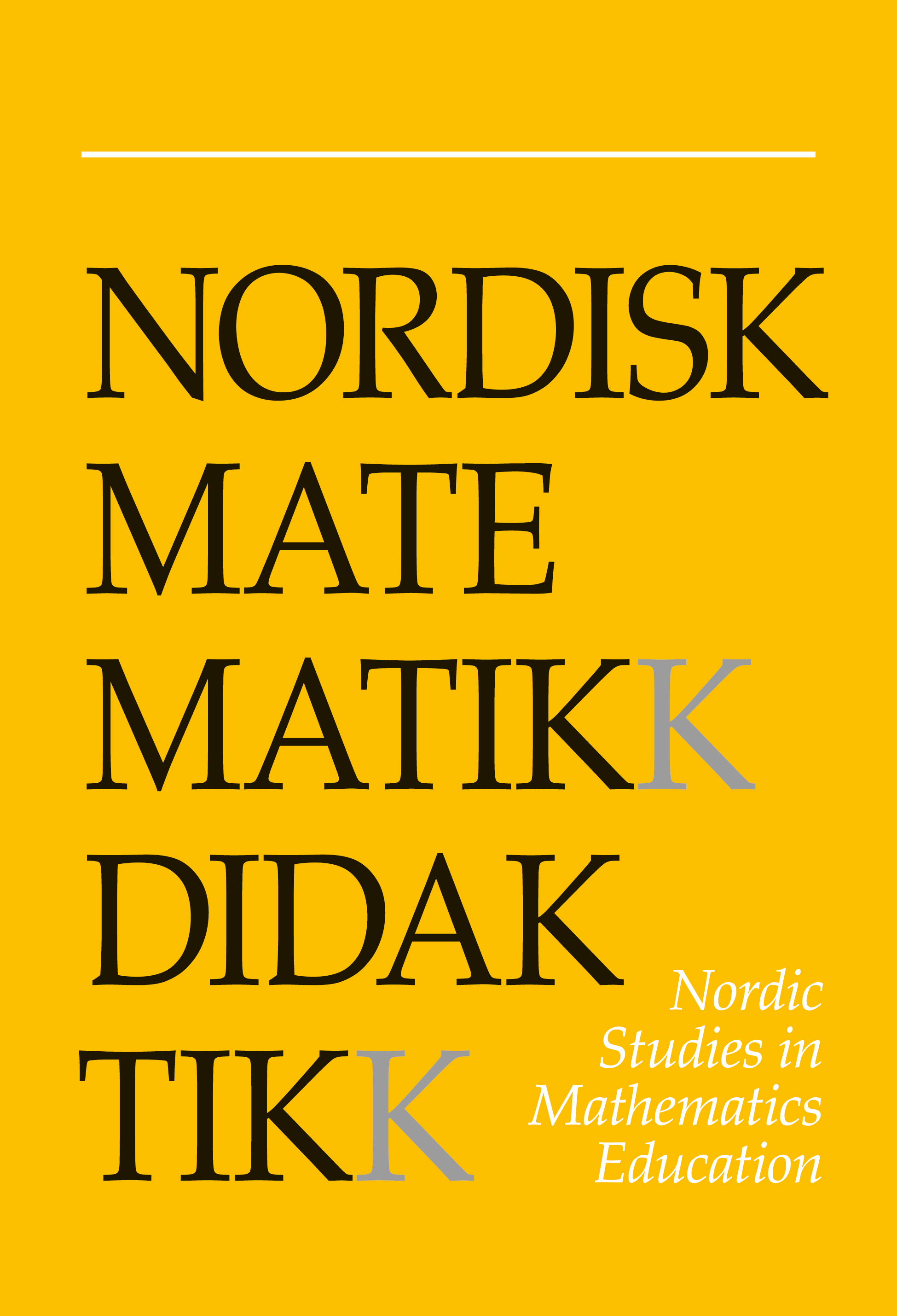Students’ reasoning and feedback from a teacher
DOI:
https://doi.org/10.7146/nomad.v27i1.149182Abstract
The present study investigates how to support students’ creative reasoning when they need assistance in solving non-routine tasks. Two groups of 11–12-year-old students solved the same tasks, one group receiving feedback directed at the task solution and the other feedback directed at their thinking processes. The results showed that students who received feedback directed at their thinking processes expressed reasoning based on their attempts to solve tasks while the other group often repeated the researcher’s suggestions for solutions. However, there were some instances in which feedback on task level entailed students engaging in creative reasoning.
References
Airasian, P. W. (1997). Classroom assessment (3. ed.). McGraw.
Ball, D., Thames, M. H. & Phelps, G. (2008). Content knowledge for teaching: What makes it special? Journal of Teacher Education, 59 (5), 389-407. https://doi.org/10.1177/0022487108324554
Blomhøj, M. (2016). Fagdidaktik i matematik [Mathematic didactics]. Frydenlund.
Boaler, J. (1998). Open and closed mathematics: student experiences and understandings. Journal for Research in Mathematics Education, 29, 41-62. https://doi.org/10.2307/749717
Boaler, J. (2002). The development of disciplinary relationships: knowledge, practice and identity in mathematics classrooms. For the Learning of Mathematics, 22 (1), 42-47.
Boesen, J., Helenius, O., Bergqvist, E., Bergqvist, T., Lithner, J. et al. (2014). Developing mathematical competence: from the intended to the enacted curriculum. The Journal of Mathematical Behavior, 33, 72-87. https://doi.org/10.1016/j.jmathb.2013.10.001
Brousseau, G. (1997). Theory of didactical situations in mathematics. Kluwer Academic.
Dyer, E. B. & Sherin, M. G. (2016). Instructional reasoning about interpretations of student thinking that supports responsive teaching in secondary mathematics. ZDM, 48 (1-2), 69-82. https://doi.org/10.1007/s11858-015-0740-1
Franke, M. L., Kazemi, E. & Battey, D. (2007) Mathematics teaching and classroom practice. In F. K. Lester (Ed.), Second handbook of research on mathematics teaching and learning (pp. 225-256). Information Age.
Hattie, J. (2012). Visible learning for teachers: maximizing impact on learning. Routledge. https://doi.org/10.4324/9780203181522
Hattie, J. & Timperley, H. (2007). The power of feedback. Review of Educational Research, 77 (1), 81-112. https://doi.org/10.3102/003465430298487
Hiebert, J., Gallimore, R., Garnier, H., Givvin, K. B., Hollingsworth, H. et al. (2003). Teaching mathematics in seven countries: results from the TIMSS 1999 video study. Education Statistics Quarterly, 5 (1), 7-15. https://doi.org/10.1037/e610352011-003
Hmelo-Silver, C., Duncan, R. & Chinn, C. (2007). Scaffolding and achievement in problem-based and inquiry learning: a response to Kirschner, Sweller, and Clark (2006). Educational Psychologist, 42 (2), 99-107. https://doi.org/10.1080/00461520701263368
Jonsson, B., Norqvist, M., Liljekvist, Y. & Lithner, J. (2014). Learning mathematics through algorithmic and creative reasoning. The Journal of Mathematical Behavior, 36, 20-32. https://doi.org/10.1016/j.jmathb.2014.08.003
Kirschner, P. A., Sweller, J. & Clark, R. (2006). Why minimal guidance during instruction does not work: an analysis of the failure of constructivist, discovery, problem-based, experiential and inquiry-based teaching. Educational Psychologist, 41, 75-86. https://doi.org/10.1207/s15326985ep4102_1
Lithner, J. (2008). A research framework for creative and imitative reasoning. Educational Studies in Mathematics, 67 (3), 255-276. https://doi.org/10.1007/s10649-007-9104-2
Lithner, J. (2017). Principles for designing mathematical tasks that enhance imitative and creative reasoning. ZDM, 49 (6), 937-949. https://doi.org/10.1007/s11858-017-0867-3
Mayer, R. E. (2004). Should there be a three-strikes rule against pure discovery learning? American Psychologist, 59 (1), 14-19. https://doi.org/10.1037/0003-066X.59.1.14
Norqvist, M. (2018). The effect of explanations on mathematical reasoning tasks. International Journal of Mathematical Education in Science and Technology, 49 (1), 15-30. https://doi.org/10.1080/0020739X.2017.1340679
Olsson, J. (2019). Relations between task design and students' utilization of GeoGebra. Digital Experiences in Mathematics Education, 5 (3), 223-251. https://doi.org/10.1007/s40751-019-00051-6
Olsson, J. & Granberg, C. (2019). Dynamic software, task solving with or without guidelines, and learning outcomes. Technology, Knowledge and Learning, 24 (3), 419-436. https://doi.org/10.1007/s10758-018-9352-5
Reinhardtsen, J. & Givvin, K. (2019). The fifth lesson: students' responses to a patterning task across the four countries. In C. Kilhamn & R. Säljö (Eds.), Encountering algebra. A comparative study of classrooms in Finland, Norway, Sweden and the USA (pp. 165-234). Springer. https://doi.org/10.1007/978-3-030-17577-1_8
Schoenfeld, A. (1985). Mathematical problem solving. Academic.
Downloads
Published
How to Cite
Issue
Section
License

This work is licensed under a Creative Commons Attribution-NonCommercial-ShareAlike 4.0 International License.



